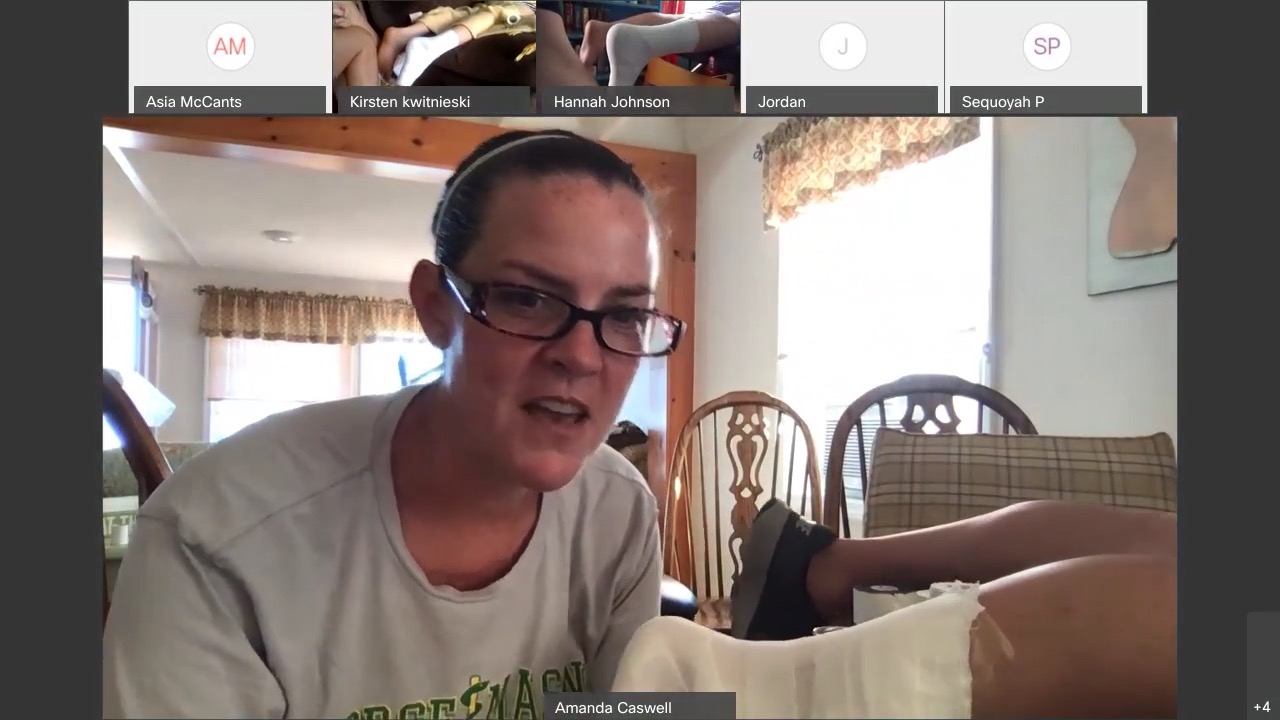In This Story

During the pandemic, Amanda Caswell, director of George Mason University’s athletic training education program, had to think creatively when preparing to teach the basics in wrapping, strapping and taping.
“Usually that’s something we do face-to-face. It’s very hands on,” said Caswell, who’s also director of the School of Kinesiology in the College of Education and Human Development (CEHD).
Improvising, Caswell created videos of the techniques, which her students watched, then practiced on camera using family members and friends. Caswell said the videos and online practice sessions worked out so well, she’ll continue their use in the future.
“If it weren’t for the pandemic, I would have never tried any of this,” said Caswell.
As Caswell and other faculty members reflect on their experiences teaching during a global pandemic, they say they’ve learned some lessons they’ll bring into the return to a more traditional academic year.
Tawnya Azar, a term assistant professor of English in the College of Humanities and Social Sciences (CHSS), said she’s considering new ways of engaging students and encouraging their participation.
“When I taught on Zoom, introverted students were able to participate using the chat function,” said Azar, describing her English 202 class in the spring. “Also, students were able to email me afterwards if they wanted to contribute or continue a conversation. I’m looking into how I can keep some sort of chat option open even when we are back to face-to-face classes.”
Over at CEHD, the pandemic “threw a wrench” into the internship program, said Tina Jones, a tourism and events management instructor. Jones, who coordinates the program, said that they had to adapt to allow for remote internships.
“We’ve learned that remote internships can also provide students with marketable skills, such as hosting virtual conferences,” said Jones, adding that they plan to offer remote internships as options for students going forward.
University Professor Rosemarie Zagarri said that she appreciated that students’ names were listed by their faces in the Zoom boxes during the online classes.
“It made class much more intimate because I always could call students by their names,” said Zagarri, who teaches in the Department of History and Art History in CHSS. “I’m thinking about handing out name cards for in-person classes to replicate that experience.”
Zagarri said she’s also planning on including more video content in the fall, such as documentaries, films and expert lectures, because “students seem to enjoy that as a different way of learning.”
Explaining that “students are craving human interaction,” Davis Kuykendall, assistant professor of philosophy, plans to create more room for group projects and partnership work than he encouraged before the pandemic.
Heidi Lawrence, associate professor of English, said she will use online spaces more than she did before the pandemic, especially when arranging guest speakers, panel discussions or collaborative projects with other parts of the university or community partners.
In Mason’s Schar School of Policy and Government, Jennifer Victor, associate professor of political science, plans to create an option for online office hours, which she found to be successful during the pandemic. In addition, Victor became more aware of the individual concerns of her students and how they needed her help.
“During COVID-19, it became so important to listen to students who were struggling,” said Victor. “The experience of teaching during a pandemic has reinforced how many students face a variety of issues—financial, health, mental health—and how we can help them with the challenges they face by listening to them and connecting them to campus resources.”
